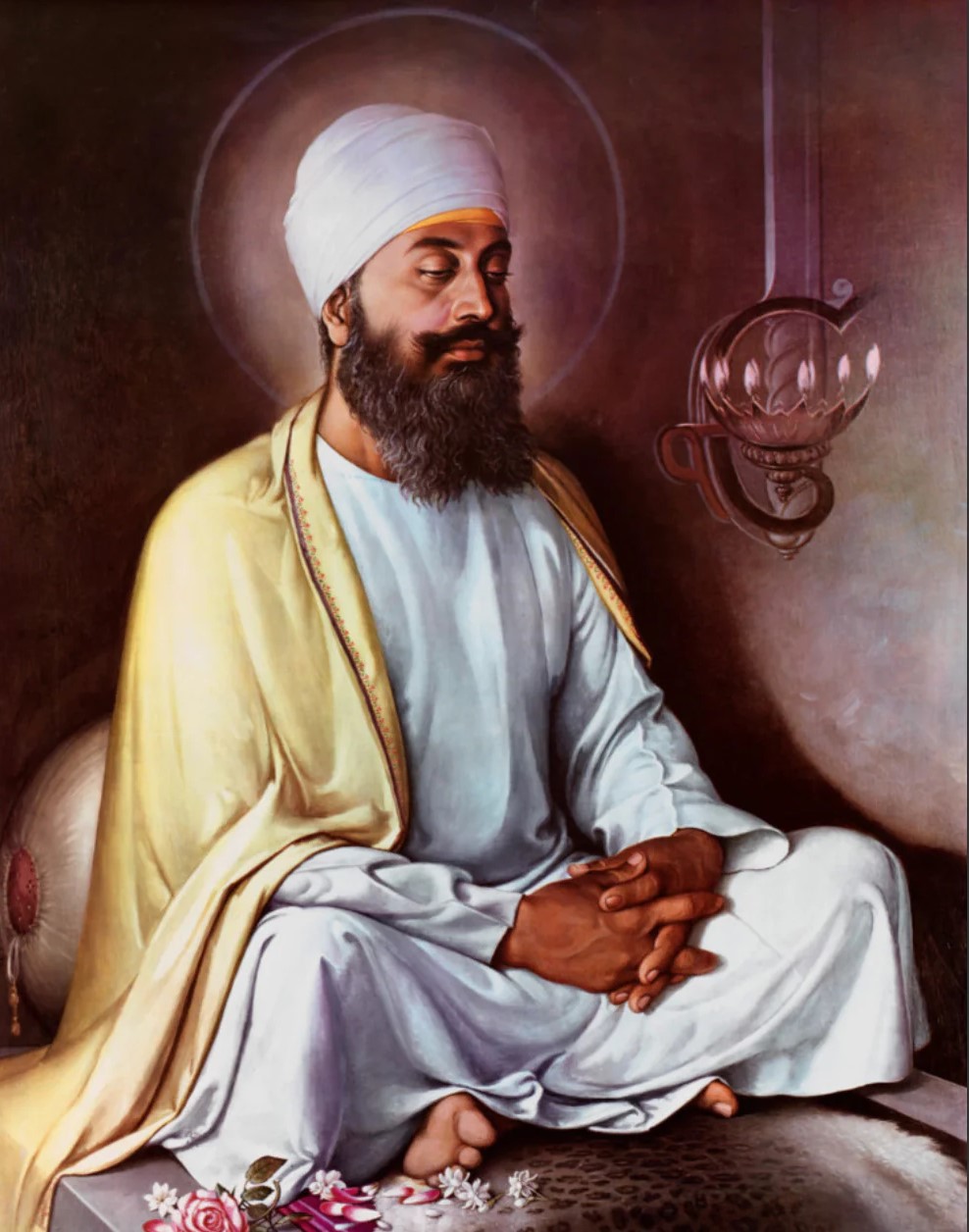
Guru Teg Bahadur Ji, the ninth Guru of Sikhism, stands as a symbol of faith, courage, and selfless sacrifice. His life was an evidence to the core principles of Sikhism, and his martyrdom left an unmatchable mark on the history of India .
Early Life & Family
Guru Teg Bahadur Ji was born on April 1, 1621 in Amritsar, Punjab to Guru Hargobind Ji, the sixth Sikh Guru, and Mata Nanak Ji. From an early age he showed humility, compassion and a deep sense of spirituality. He received his education and spiritual training from his father Guru Hargobind Ji and later from Guru Har Rai Ji, his grandfather and the seventh Sikh Guru.
At the age of 13, Guru Teg Bahadur Ji moved to Kiratpur Sahib, a town in the Shivalik Hills. There he continued his spiritual training and was further influenced by the teachings of Guru Har Rai Ji .
Accession to Guruship
In 1664, Guru Teg Bahadur Ji succeeded Guru Har Krishan Ji as the ninth Sikh Guru. His guruship came during the difficult period when the Mughal Empire, led by Emperor Aurangzeb was oppressing & killing the hindus , sikhs and other religious minorities.
Faith Defender ( Hind Di Chadar)
Guru Teg Bahadur Ji is best known for his dedicated support & protection of religious freedom and the rights of the oppressed.
When the Kashmiri Pandits faced religious persecution by the Mughals and sought Guru Ji's help to protect their right to practice Hinduism, he fearlessly undertook the task and left for Delhi to negotiate with Emperor Aurangzeb and put an end to the persecution .
Martyrdom of Guru Teg Bahadur Ji
Guru Teg Bahadur Ji traveled to Delhi , the Mughal capital, to confront Aurangzeb and advocate for religious freedom. Despite facing threats and pressure to convert to Islam, Guru Tegh Bahadur Ji remained steadfast in his beliefs.
Despite many attempts to convert Guru Teg Bahadur Ji to Islam, he didn’t change his decision and was committed to protect the religious freedom of others.
In November 1675, Guru Ji along with his devoted companions Bhai Mati Das, Bhai Sati Das and Bhai Dyal Das were arrested in Delhi because they refused to leave their faith.
On November 11, 1675, he was publicly beheaded in Delhi's Chandni Chowk.
Gurudwara Sis Ganj Sahib
Guru Teg Bahadur Ji's place of martyrdom in Delhi is now known as Gurudwara Sis Ganj Sahib, which remains a place of pilgrimage and importance for Sikhs. It is a living proof and example of the guru's sacrifices and dedication to the principles of justice and religious freedom.
Spiritual Teaching & Legacy
Guru Teg Bahadur Ji's spiritual legacy is preserved in the Guru Granth Sahib, where his hymns serve as a source of inspiration and guidance. His teachings revolved around devotion, moral values and the meaning of a righteous life. Guru Ji's wisdom goes beyond time and offers comfort and spiritual guidance. The spiritual teachings of Guru Teg Bahadur Ji continues to inspire Sikhs and seekers of all backgrounds.
Conclusion
Guru Teg Bahadur ji’s legacy is an inspiration to generations and reminds us of the importance of protecting justice and religious freedom even in the face of adversity.
The teachings and sacrifices of Guru Teg Bahadur Ji continue to shine as a sign of hope and justice in a world that yearns for such principles.
His legacy remains a guiding light for humanity, reminding us of the importance of standing up for justice, tolerance and the right to freely practice one's faith.
Note- We have made every effort to ensure the accuracy and reliability of the information provided. However, this content is intended for informational purposes only and reflects historical and cultural perspectives. DVN does not assume responsibility for any disputes or actions that may arise from the use of this content. If you believe any information is incorrect or misleading, please contact us.